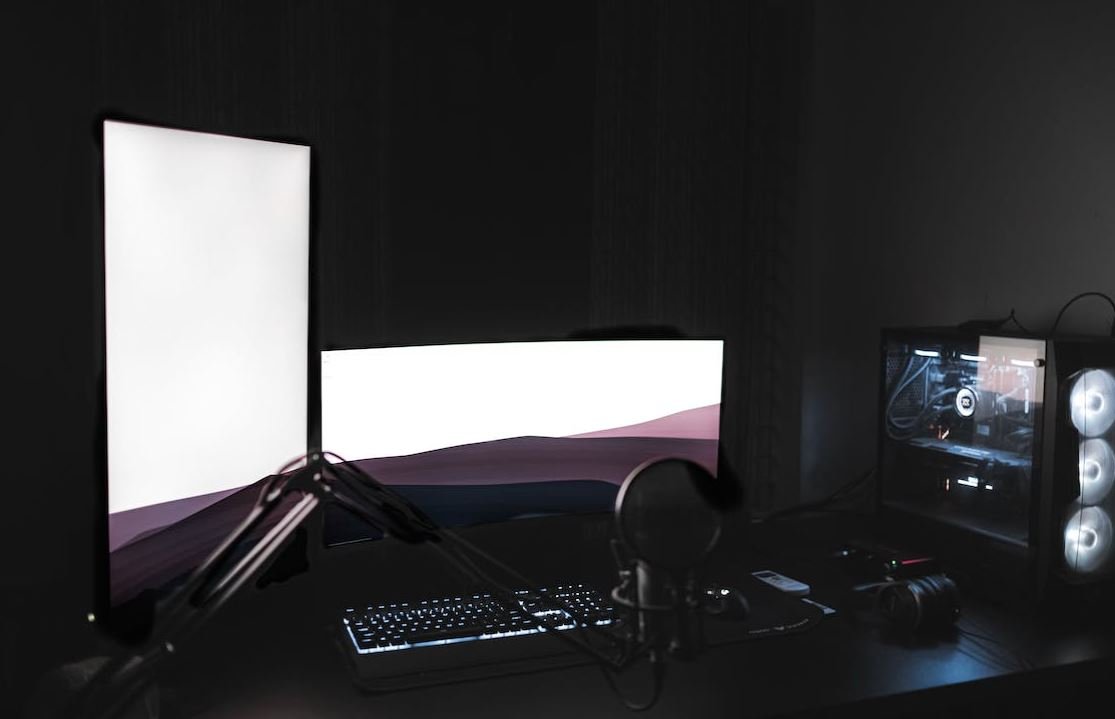Generative Sound Design
Generative sound design is a unique approach to creating soundscapes and audio compositions using algorithms and randomness, allowing for the creation of dynamic and ever-changing audio experiences.
Key Takeaways:
- Generative sound design utilizes algorithms and randomness to create dynamic audio experiences.
- It offers possibilities for infinite variations and can be used in various applications, including music production, game development, and audio installations.
- Generative sound design allows for exploration and experimentation, fostering creativity and unique sonic experiences.
Understanding Generative Sound Design
In generative sound design, instead of manually composing individual sounds or melodies, algorithms and random processes are employed to generate audio elements. *This approach gives rise to a wide range of possibilities, making each composition unique and adaptable.*
Generative systems can be programmed to manipulate parameters such as pitch, rhythm, timbre, and spatialization in real-time, creating complex and evolving soundscapes. By defining rules, constraints, and interactions, designers can influence the generation process while still allowing for unexpected and unpredictable outcomes.
Generative sound design can be applied to various contexts, including music production, game development, interactive installations, and virtual reality experiences. It offers a way to infuse projects with dynamic and immersive audio that continuously evolves, enhancing engagement and emotional connections.
Applications of Generative Sound Design
1. Music Production
In music production, generative sound design can be used to create generative pieces or to add layers of variability to traditional compositions. Musicians and producers can program the rules and parameters for generative algorithms to generate melodies, harmonies, and rhythms, resulting in evolving compositions that never play the same way twice.
2. Game Development
Generative sound design has great potential in game development, adding depth and adaptability to sound effects, background music, and ambient audio. By defining interactive elements and behaviors, generative audio can dynamically respond to in-game events and player actions. This creates a more immersive and personalized gaming experience.
3. Audio Installations
Generative sound design can also be utilized in audio installations, both in public spaces and galleries. By integrating sensors, generative algorithms can transform environmental data into sound, creating interactive and site-specific audio experiences. These installations offer a unique way to engage and stimulate audiences on a sensory level.
Advantages and Challenges
| Advantages | Challenges |
|---|---|
|
|
Examples of Generative Sound Design
Generative sound design finds applications in various fields, including notable examples such as Brian Eno’s “Music for Airports,” Karlheinz Essl’s “Lexicon Sonate,” and Ryoji Ikeda’s “datamatics.” These works incorporate generative elements to create immersive and thought-provoking soundscapes.
Conclusion
Generative sound design offers a fascinating approach to audio creation, enabling infinite variations and the exploration of unique sonic experiences. Whether in music production, game development, or audio installations, the use of generative sound opens up new possibilities for dynamic and ever-changing soundscapes. Embrace the power of algorithms and randomness to embark on a journey of sonic discovery.

Common Misconceptions
Generative Sound Design is only for musicians
One common misconception about generative sound design is that it is only for musicians or those with a strong musical background. However, this couldn’t be further from the truth. Generative sound design is a creative and innovative approach to sound design that can be explored by anyone with an interest in sound and technology.
- Generative sound design offers a unique way for non-musicians to get involved in creative audio exploration.
- Understanding musical theory or having extensive knowledge of instruments is not a prerequisite for engaging with generative sound design.
- There are various beginner-friendly tools and software available that make it accessible to individuals without a music background.
Generative Sound Design is too technical for beginners
Another misconception is that generative sound design is too technical for beginners and requires advanced knowledge of programming or audio engineering. While it is true that there may be technical aspects involved, there are also plenty of user-friendly tools and software that make it accessible to beginners.
- There are drag-and-drop style graphic interfaces that allow beginners to create generative soundscapes without any coding knowledge.
- Online tutorials and courses cater to beginners, providing step-by-step guidance in generative sound design.
- Starting with simple generative sound experiments can be a great way for beginners to get hands-on experience and gradually build their technical skills.
Generative Sound Design is purely random and lacks control
Some people believe that generative sound design is purely random and lacks control, leading to unpredictable and chaotic results. While randomness can be an element of generative sound design, it is not the only driving force, and control is a fundamental aspect of the process.
- Generative sound design involves setting parameters and rules that guide the generation of sounds, providing a level of control over the output.
- There are various techniques and algorithms that allow designers to shape and influence the generated sounds within defined boundaries.
- Musicians and sound designers can actively shape and manipulate the generative sounds in real-time to create desired compositions or environments.
Generative Sound Design is only for ambient or experimental music
Another misconception is that generative sound design is limited to ambient or experimental music genres. While it is true that generative sound design has found significant usage in these areas, its applications extend far beyond and can be applied to various other genres, films, installations, and interactive experiences.
- Generative sound design techniques can be used in pop music, electronic music, hip-hop, and many other genres to create unique soundscapes, textures, and compositions.
- In multimedia installations or interactive experiences, generative sound design can enhance the overall immersive experience by creating dynamic audio elements that respond to user interactions or environmental stimuli.
- Generative sound design can also be employed in sound branding or sound design for films, adding a fresh and evolving sonic dimension to the storytelling.
Generative Sound Design is just a trend
Some people may see generative sound design as just a passing trend in the world of music and sound design. However, its principles and techniques have been around for a long time and continue to evolve and find new applications.
- Generative sound design draws inspiration from concepts like chance music, aleatoric music, and stochastic synthesis, which have been explored by composers and sound designers for decades.
- The advancements in technology and the increasing interest in interactive and immersive experiences have opened up new possibilities for generative sound design, making it more relevant than ever.
- Generative sound design allows for endless variations and explorations, facilitating innovation and creativity in the field of music and sound design.

Introduction to Generative Sound Design
Generative sound design is an innovative field that combines music composition, technology, and artistic experimentation. It involves the creation of audio content that evolves and changes over time, offering unique and immersive experiences for listeners. The following tables highlight various aspects of generative sound design, including its applications, notable practitioners, and the equipment commonly used in this creative process.
Applications of Generative Sound Design
Generative sound design finds applications in diverse fields, ranging from film and gaming to installations and live performances. Here are examples of three notable areas where generative sound design is extensively employed:
Famous Practitioners in Generative Sound Design
Several talented artists and musicians have made significant contributions to the field of generative sound design. This table showcases three renowned practitioners and their notable works:
Equipment Used in Generative Sound Design
Generative sound design heavily relies on various tools, instruments, and technologies to create dynamic and evolving audio compositions. Here, we explore three essential pieces of equipment commonly used by generative sound designers:
Generative Sound Design Software Comparison
To create complex and evolving soundscapes, sound designers often utilize dedicated software programs. This table provides a comparison of three popular generative sound design software:
Notable Projects Utilizing Generative Sound Design
Generative sound design has been instrumental in the creation of groundbreaking projects that transcend traditional audio experiences. Here are three notable projects that highlight the capabilities of generative sound design:
Advantages of Generative Sound Design
Generative sound design offers numerous benefits that have contributed to its growing popularity in various artistic disciplines. Here, we outline three advantages associated with this innovative approach:
Challenges in Generative Sound Design
While generative sound design opens up new possibilities, it also presents unique challenges that artists need to overcome. This table explores three common challenges faced by generative sound designers:
Generative Sound Design and Immersive Environments
Generative sound design has found a natural home within immersive environments, where it can enhance the overall sensory experience. Here, we highlight three immersive projects that effectively utilize generative sound design:
Collaborations in Generative Sound Design
Collaboration between different creative entities often leads to groundbreaking work within the realm of generative sound design. This table showcases three notable collaborations and their remarkable achievements:
Conclusion
Generative sound design has emerged as an exciting and innovative field, offering limitless possibilities for creating dynamic and ever-changing audio experiences. Through the exploration of various applications, notable practitioners, equipment, software, projects, advantages, challenges, immersive environments, and collaborations, it becomes evident that generative sound design has revolutionized the way we perceive and interact with sound. As technology advances, it is likely that generative sound design will continue to evolve, pushing the boundaries of audio composition and providing unique auditory encounters for future generations.
Frequently Asked Questions
What is generative sound design?
Generative sound design is a technique where audio is produced and manipulated through algorithms, randomization, and other rule-based processes to create unique and evolving soundscapes.
How does generative sound design differ from traditional sound design?
In traditional sound design, audio is mainly created by composing or manipulating specific sounds or samples manually. Generative sound design, on the other hand, focuses on creating rules and systems that generate audio autonomously or with minimal human input.
What are the advantages of generative sound design?
Generative sound design offers several advantages including the ability to create infinite variations of sound, the potential for unexpected and unique results, and the ability to evolve and adapt over time without direct manual intervention.
What are some tools or software used in generative sound design?
There are several software and tools available for generative sound design, including Max/MSP, Pure Data, SuperCollider, and Csound. These platforms provide the necessary tools and environments for composing and manipulating generative audio.
Can generative sound design be applied to specific industries or applications?
Yes, generative sound design can be applied to various industries and applications, including music production, film soundtracks, video game sound design, virtual reality experiences, interactive installations, and ambient soundscapes for public spaces.
Are there any limitations or challenges to generative sound design?
While generative sound design offers many possibilities, it also presents challenges such as finding the right balance between randomness and control, ensuring coherence in the generated audio, and overcoming technical limitations of the chosen software or platform.
How can generative sound design enhance creative projects?
Generative sound design can enhance creative projects by adding an element of surprise and serendipity to the audio, creating dynamic and evolving soundscapes, and providing a unique and immersive auditory experience for the audience.
Can generative sound design be combined with other audio techniques?
Absolutely! Generative sound design can be seamlessly combined with other audio techniques, such as traditional composition, sampling, synthesis, and audio processing, to create complex and layered sonic experiences.
Is programming knowledge necessary for generative sound design?
While programming knowledge can be helpful in generative sound design, it is not always necessary. Many user-friendly tools and visual programming environments exist that allow users to create generative sound without extensive coding skills.
Where can I learn more about generative sound design?
There are various online resources, tutorials, forums, and communities dedicated to generative sound design. You can also explore books and courses on the subject to deepen your understanding and develop your skills.




